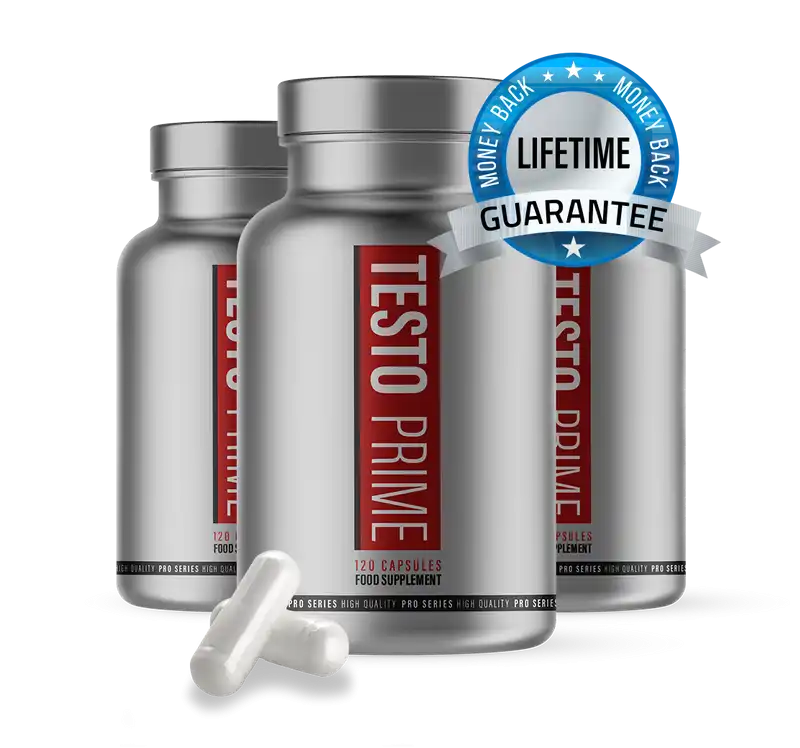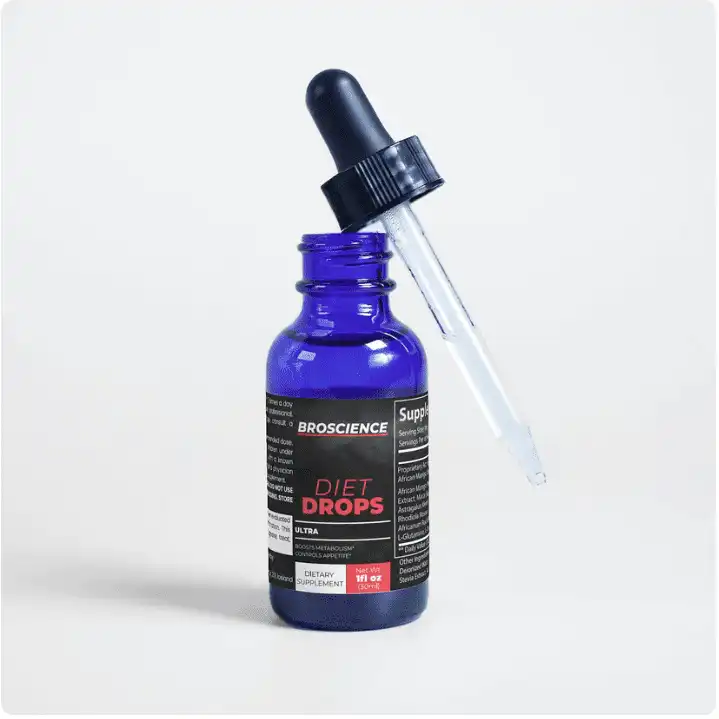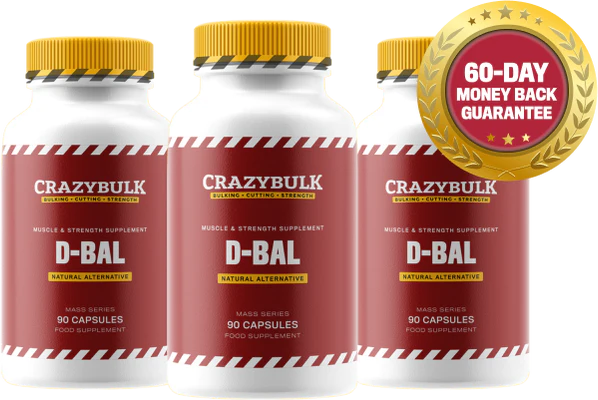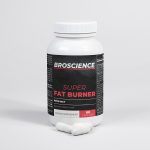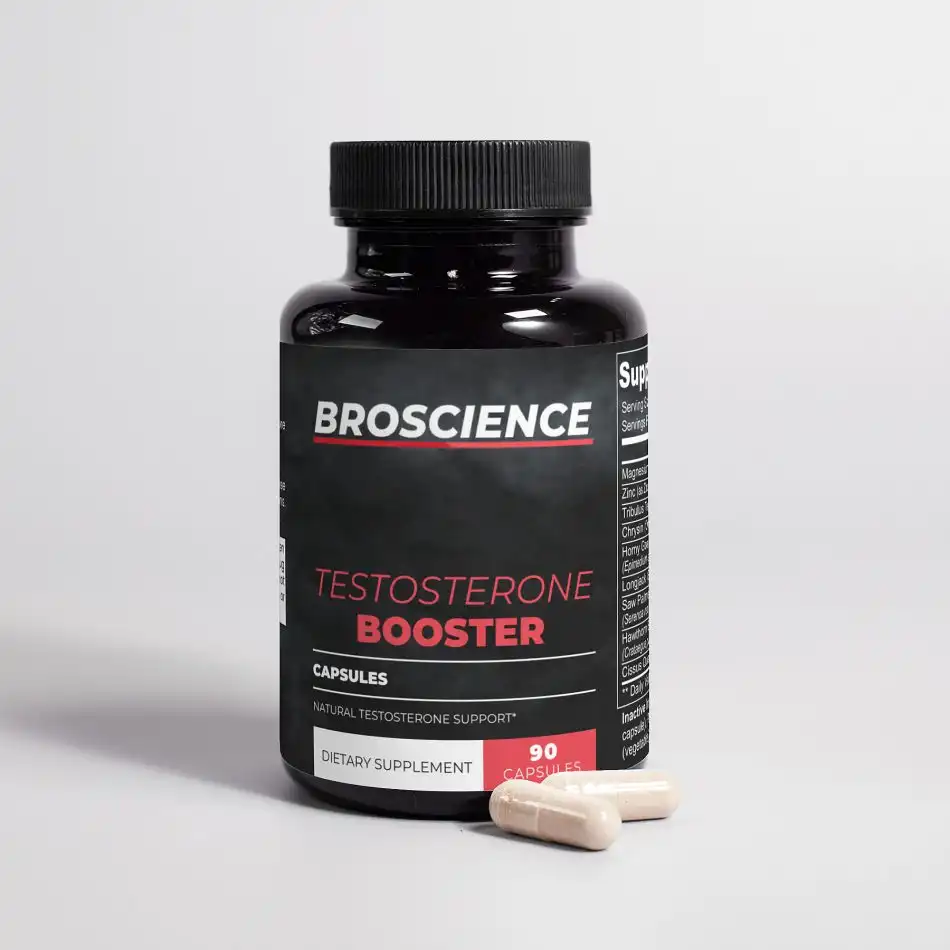
It is month 8 of your bulk and you already feel like you lost your athletic ability so now you want to know how to get shredded fast.
You feel clumsy, bloated and maybe borderline fat.
The six pack has already started hiding behind a layer of water and fat, which you so want to get rid of.
Now, if that’s the point, you probably didn’t have the sufficient knowledge in the first place.
Unleash the full testosterone-producing potential in your body. Improve muscle growth and increase fat loss fast.
What follows up is a google search on the topic of getting shredded.
If that’s the information you are looking for, say no more – You are on the right place, as we are about to share with you, our step-by-step, structured guide to losing the fat and showing off what you have been working hard for.
Our ultimate goal with this guide is to help you create a mental map and the blueprint for getting shredded.
Why get leaner?
After you’ve made some serious gains and logically, stacked on some fluff, it is time to get that off and show a defined, aesthetic physique.
Important mentions
1. While losing body fat to shred down, we also lose muscle
In previous articles, we’ve talked about the fact that when in a caloric deficit, we lose not just fat, but water and lean body mass (LBM) as well.
My Top Recommended Supplements
Lean body mass is not just muscle, but every other tissue in the body, except for fat.
Of course, you wouldn’t want to lose the muscle you’ve worked hard for and you also want to remain healthy.
And so, we can conclude that while obesity puts people at a number of health risks, it is just the same with losing that excess weight.
Weight loss is often accompanied by a reduction in the healthy function of the organism, which is exactly why, it should be in moderation.
2. The more fat you have, the more time it takes to lose


Now, this article is not just for the skinny boys who covered the bottom of their six pack with subcutaneous water, because of the ice cream they just ate. No.
This article is designed to help trainees of ALL shapes and sizes.
That’s exactly why we mention obesity. Now to the point – If you have a lot of fat and want to lose it, in a healthy way that would allow you to preserve LBM and your metabolism, you would need to spend some time dieting.
Then again, if you’re obese or borderline obese, you can start off by losing more weight per week and then reducing that number down, as your body composition comes back to normal.
This information can be of use for regular trainees who don’t have excess weight, but are wondering how to optimize their shred cycle.
Are you serious about FINALLY losing that stubborn belly fat? Then this is for you. Powerful fat burner that helps you supercharge your metabolism for fast results.
What I mean is that if more fat means more time dieting, and more time spent dieting means more muscle loss, then gaining excess fat while gaining muscle is essentially hindering your progress.
Micro-managing our bulking period, to avoid excessive fat gains is the quickest way to get shredded.
Legal muscle-building supplement that's designed to mimic the effects of dianabol without all side effects.
Paradox? Not really. Just optimization.
3. After coming out of the diet, weight will change
As the body gets rid of its energy reserves, which fats are, it starts desperately looking for means of getting them back.
In previous articles, we’ve mentioned that fat loss (controlled starvation) is literally priming the body for fat gains and slows down the metabolism.
What this means for you is that you should not view the diet as something that has an end point.
Training and nutrition should rather become a healthy habit, which goes through adjustments, depending on your current goal.
Putting it like this, we can conclude that you MUST NOT suddenly get back to your old, sh!@#ty eating habits that got you to the point where you need to cut down.
That will only result in a sudden rebound and you will gain all the weight back quickly.
With this foreword out of the way, I’ll say one thing.
Our goal with this information is to help you optimize the above-mentioned 3 things.
With the information in this article, you will:
- Minimize muscle loss while cutting
- Remain healthy
- Maintain a lean physique while transitioning into the off-season
- Micro-manage the off-season to minimize fat gains
How to get shredded?


So, how do you actually get shredded and what are the most important parts of this period?
If there is one thing that makes or breaks your shredding period, it has to be your caloric intake.
Following that train of thought, we can conclude that hardcore workouts at maximum effort won’t cut it (pun intended).
For the best possible results, you’ll have to monitor your nutrition intake.
As you should know, we must subject our bodies to a caloric deficit, in order to allow the body to tap into the energy reserve – Fats.
The bigger the deficit, the more fat and lean body mass we lose.
That is to say that the deficit has to be rational and in no extremes.
Your end goal is to provide your body with sufficient amounts of micro and macronutrients, in order for it to be able to maintain LBM and homeostasis as much as possible.
Last but not least, the food has to be sufficient for all your physical and mental activities throughout the day.
So, without further ado, let’s learn how to calculate your daily needs
How much do you need to eat a day?


Okay so the fundamental principle of weight loss is the energy balance, or in other words, how much energy you burn and how much energy you consume.
As you may know from our previous articles, the amount of energy that the human body needs to MAINTAIN its weight, is referred to as “Total daily energy expenditure (TDEE)” and is measured in calories.
The TDEE depends on a number of factors:
- Gender
- Age
- Height
- Weight
- Daily activity
- Exercise output
Now, we can make this complicated for you and give you all the hard to understand formulas for each of the variables.
However, as you may already know, these formulas are well-integrated within a number of online calculators.
Our recommendation is the calculator of Alan Aragon, who’s a nutrition researcher and educator, with more than 20 years of experience.
Here is the link to his calculator: https://www.traininginthebay.com/macro-calculator/
NOTE! All online calculators are an approximate measure of your TDEE. Proximity – 100-200 calories +-
How to calculate macronutrients


Okay, you now calculated your total daily energy expenditure. You know approximately how much energy your body needs each day, to maintain its weight and functions.
The next actionable step is calculating your macronutrients, given that TDEE.
Protein
The widely recommended, which you may know of, is 1g per lbs. of bodyweight.
For most people, that will be more than enough to retain muscle mass during weight loss and also, build muscle
mass by stimulating protein synthesis, in individuals who are in a building period.
However! 1g per lbs may just be a bit too much, or too little, depending on the context.
For the most part, protein intake can go as low as 0.8g/lbs and as high as 1.2g/lbs of bodyweight.
The leaner you are, the more training experience and muscle mass you have, the more protein that muscle mass will require to be sustained.
And so, if you are a 200 lbs individual, you will have to get anywhere from 160~240 grams of protein per day.
Note that the higher end of that range is ONLY for TRAINED, active people with a lot of muscle mass.
~200 grams would be more than enough for beginners and intermediates, who have a lot of fluff to shed off.
NOTE! We recommend you to derive your proteins from animal products – Free range beef, chicken, eggs and some dairy products. This is simply because animal products contain the full amino acid profile, which our bodies need to recover, simply because there are some amino acids that the body can’t produce on its own (essential amino acids).
If you’re a vegetarian or vegan, include a good mix of grains, as plant products lack some amino acids for the most part.
Mixing grains will allow them to compliment and compensate for each other.
Fat
We need to acknowledge the fact that no extremes should be reached. A shredding diet is most sustainable when all 3 macronutrients are in good balance.
And that includes fat.
As a matter of fa(c)t, fat intake is vital, as deprivation of it may lead to hormonal changes and worsened functioning of certain systems in the body.
That’s why, we recommend a minimum of 20% of your daily calories to be derived from fats.
Usually, 0.35-0.45g of fat per lbs of bodyweight is a sufficient amount for most individuals.
And so, if you’re 200 lbs, that would be 70-90 grams of fats per day.
Keep in mind that fats are more than twice as calorie dense, when compared to proteins and carbs.
Fats have 9 calories per gram, while proteins and carbs both have 4 calories per gram.
Following that train of thought, we can conclude that this is the main reason for people to be getting fat from fast foods.
Fast foods simply contain TOO MUCH fat, as they have deep-fried meat & potatoes. And so, it’s not the meat or the potatoes that are unhealthy, but rather the means of thermic treatment that make them such.
Will fats make you fat?
First and foremost, before I continue, I’ll clear this misconception out of the way – Fats won’t get you fat.
It is the excessive fat intake that can get you fat. As a matter of fact, it doesn’t matter if the excess comes from fat or carbohydrates – Whatever you consume in great amounts that go beyond your maintenance needs, you’ll get fat.
As you already should know, fats are important as they are not only a hormonal modulator, but also a secondary energy source for the body (Aerobic metabolism).
Furthermore, dietary fats are the building blocks of neurotransmitters and play a role in the structure of cells.
We won’t go in too much detail, as we are going to write a separate article called – Everything you need to know about fats.
For now, it is enough to know that fats are vital and play massive roles in pretty much every bodily process.
Generally, the animal products, such as beef, dairy and eggs, will give your body enough healthy fats.
However, if needed, you can add other fats, such as olive oil, peanut butter, omega-3 & 6 supplements, etc.
Carbohydrates
OH NO! The biggest enemy of people who religiously use the ketogenic diet – Carbs!
Carbohydrates are a widely misunderstood concept, which is why people go mad about their diets and do extreme low-carb regimens, in hopes of losing fat.
Someone, somewhere on the internet wrote that carbohydrates get stored as fat and people trip over that.
Well, that’s pretty wrong! You can’t really beat thermodynamics – The law of energy balance applies for all macronutrients.
So, again – Unless you are systematically consuming an excess of calories, you WON’T get fat.
Should you eat carbohydrates? YES!
If you are an individual that does not have any blood sugar issues that would require a low-carb diet, for the love of god, please do consume carbohydrates!
As you should know, carbohydrates get converted to blood glucose and if not used, they get stored as glycogen (in the muscles and the liver).
That glycogen is the most sustainable and easy to use source of energy for both the muscles and the brain.
If you’ve followed our educational articles, you would know that glycogen is used during intense muscular activity, via the Anaerobic-Lactic energy pathway.
Check – The 3 energy systems of the body
Furthermore, it is also used during low-intensity, long in duration physical activities like cardio, via the Aerobic energy pathway.
We recommend you to derive carbs from grains, such as rice, oats and legumes, rather than simple sugars like waffles.
Plant carbs have more complex structures which allow for a more sustainable and gradual metabolism and provision of energy.
The recommended carbohydrate intake is the rest of the calories, after calculating your protein & fats.
Example
Alright, let’s take the example with the 200 lbs individual further.
We have a 200 lbs male that requires 2800 calories to maintain his weight.
The MAINTENANCE macros for him, would look something like this:
Protein – 200 lbs * 1gr = 200 grams = 800 calories (4 calories per gram of protein)
Fat – 200 lbs * 0.35 gr = 70 grams = 630 calories (9 calories per gram of fat)
Now that we have the protein and fat calculated and totaling at 1430 calories, we have almost that many calories left for carbohydrates. TO calculate the carb intake we simply divide the remaining calories by 4 (Four calories per gram of carbohydrates)
Carbs = 1370 : 4 = 342 grams of carbohydrates
Alright, those are MAINTENANCE calories and macros. With 200 grams of protein, 70 grams of fat and 342 grams of carbs, this individual WILL NOT OBSERVE ANY CHANGES IN WEIGHT.
Now that he wants to get lean, let’s see how we can create a caloric deficit to allow the body to tap into its energy reserves (Fat)
How to eat in a calorie deficit


Alright, we learned how to calculate maintenance calories and macronutrients.
Now it is time to create the so-desired, sustainable caloric deficit we were talking about.
It is important to mention here that the deficit has to be mainly created at the expense of fats and carbs, rather than protein! In other words – Protein intake remains pretty much the same.
Why is that you may ask?
Simply because proteins will be your MOST IMPORTANT thing when it comes to retaining and preserving lean body mass (LBM).
Another important mention here is something we talked about earlier – Creating a rational caloric deficit, that will allow you to lose fat at a reasonable rate, while also retaining as much LBM as possible and granting energy for all daily physical and mental activities.
What we’re looking for, again- Something sustainable which we can adhere to.
Dieting and shredding down MUST NOT be a torture – Starvation is a stress for the organism and stress in the long term makes certain systems shut down.
By getting shredded, the main goal is not just looking better, but also remaining healthy and feeling well.
Recommended deficit
We recommend you to go anywhere from 300 to 500 calories per DAY, with 500 calories being the upper range.
Generally, 1 lbs of fat contains about 3500 calories, meaning that a deficit of 500 calories per day, will stack up to 3500 calories for the whole week.
That deficit of 3500 calories will make your body shed off about 1 lbs of fat, with minimal muscle loss.
NOTE! If you have A LOT of excess body fat (Not just 10-15 lbs), the rate of weight loss can go up! The more fat you have to lose, the quicker it can go. For such individuals, the fat loss during the first weeks can go up to ~3 lbs per week.
As the body composition returns back to normal, a steady rate of 1-2 lbs per week must be implemented.
And so, if we take the same 200 lbs male who needs 2800 calories to maintain (200 protein, 70 fat, 342 carbs), we can start off by removing 100 grams of carbs and 5 grams of fat.
Removing these macronutrients from the maintenance need will result in a deficit of 445 calories (100 grams of carbs = 400 calories & 5 grams of fat = 45 calories)
NOTE!
- Week 1
During week 1 of a weight loss diet, you might lose up to 5 lbs. That won’t be 100% fat, but mainly excrements, food & water weight.
- Week 2
Each deficit diet will need to be adjusted. If on week 2 you lose more than 2 lbs, slightly increase food. If you are losing less than 1 lbs, slightly decrease food. Your ultimate goal is losing ~1-1.5 lbs per week.
Monitoring & adjustments


It is important to acknowledge the thing we mentioned earlier – TDEE calculators only give an approximate number.
Even though that’s the case, they are still pretty accurate, as the proximity is +- 100-200 calories.
What that means for you is that a couple of adjustments would be needed before reaching the golden environment for LBM preservation – 1 lbs/week.
How to adjust a diet
To properly adjust it, start off by monitoring yourself, while keeping in mind that weight can and will fluctuate.
For the best results, get a weigh-in every morning (! On an empty stomach, before breakfast, after going to the toilet! This is your true weight).
Once you have 7 weigh-ins for the week, add all the numbers and divide by 7 to get an average.
The goal is to get a smaller average week after week. To be precise, 1-1.5 lbs smaller.
Example
Start of the diet – 200 lbs
End of week 1 – 195 lbs, 5 lbs of water, food, fat lost.
Start of week 2
- Day 1 – 195 lbs
- Day 2 – 194.8 lbs
- Day 3- 194.6 lbs
- Day 4 – 194.6 lbs
- Day 5- 194.7 lbs
- Day 6 – 194.4 lbs
- Day 7 – 194.1 lbs
The total of that is 1362.2 lbs, which, when divided by 7 gives an average weight of 194.6 lbs and a loss of 0.4 lbs.
In that case, the adjustments in the diet would include removing 100-150 calories for the upcoming week.
Then again, if you are losing TOO MUCH (2+ lbs per week after week 1), make sure to add some food.
How to train to get shredded


Alright, we got the basic principles of shredding in check – You need a consistent, moderate caloric deficit, that will allow you to lose no more than 1.5-2 lbs per week, with sufficient protein intake.
But what about training? How important is it? Do you need cardio?
Well, of course training is important! Especially if you’re an intermediate or advanced trainee who’s not just looking to lose excess fat, but to also get leaner, shredded and defined.
Training is one of the key aspects of your plan, which will help you not only retain the muscle mass, but also shape it up and develop it in detail.
By doing the correct resistance workouts, you will achieve a musculature that is developed in deep detail – More fibers, rounder muscles and more vascularity.
Training guidelines on how to get shredded
-
Intensity
Forget about hardcore training and high levels of intensity. If you’ve read some of our previous articles, you should know by now that the nature of intensity is stressing and constructive.
That is why, for the most part, we need a positive energy balance (more than TDEE), in order to properly recover from intense workouts.
Bringing sets to or close to failure will lead to positive adaptations such as muscle growth and increases in strength, if of course, the nutrition is proper.
In the case of a deficit for shredding however, that is not the point of our training.
While cutting down, our main goal, as we should know, is retaining and shaping up the muscle mass.
To do so, we need to stay away from the recovery & food demanding high levels of intensity.
Instead, we are manipulating the other two parameters of the workout – Volume and density.
Our goal during the shredding period can be achieved via a higher number of repetitions, moderate weights and lower rest times in-between sets.
In doing so, we will allow for a bigger volume of nutrient-rich blood to reach and replenish the muscle tissue.
-
Isolation
We know that during the muscle-building period, we have to mainly rely on compound movements, that allow us to move heavier weights.
With the case of shredding, the approach is a bit more different – We’re looking for optimal muscle contractions.
That can be achieved by including more isolated movements, that will help us achieve those optimal contractions.
That however doesn’t mean we should completely remove compound movements from our routine.
Instead, do include compound exercises in the beginning, but then after that, focus more on isolated movements and proper peak flexion.
-
Prioritizing weak points
One of the goals of both periods – Gaining & shredding, is to bring up lacking muscle groups.
Place your weaker, lacking muscle groups in the beginning of your training split & workouts.
Last but not least, don’t forget to do more exercises, sets and repetitions for those same, lacking muscle groups.
-
Control the intensity
This was the first point, but we just HAVE to repeat it. Don’t redline yourself! High levels of intensity are not the goal of a shredding workout.
Just get into a flow that allows you to get optimal muscle contractions, pump and stretches, through some compound and more isolated movements, with rests of 30-40 seconds between sets.
Is cardio good for shredding?


First and foremost – Cardio is NOT a must for shredding. You can go without it.
As long as you have a caloric deficit going on, cardio is in no way mandatory.
However, doing it a couple of times per week, you will get a TON of benefits for the cardiovascular and respiratory systems.
That is also why we encourage you to include cardio (aerobic) workouts, and even sprints once or twice a week, during your shredding period.
Then again- Cardio is NOT mandatory and is completely optional, though highly recommended!
Post-diet approach
As we’ve mentioned previously, losing fat primes the body for fat gains.
That is why, after losing fat, you are at a risk of gaining it all back, if you suddenly start eating like you’re in an off-season.
To avoid that, we need to do the so-called “reverse diet” , which is essentially the transition period between your shredding period and your building period.
We need to acknowledge the fact that the body takes time to adapt and get the metabolism back up to pace, which is why, we need to stay on track.
After you have reached the desired shape, start GRADUALLY introducing more food to your body.
Increase your caloric intake by 30-50 calories per week, adding more carbs and fats, while also tracking your weight (!)
Furthermore, besides the transition in the diet and gradual increase of food intake, you should also make a transition period in your training.
Slowly increasing the working weights and the rest times between sets, as well as reducing the repetitions you will get into a bulking phase.
That is highly recommended, as gaining more muscle mass will allow you to increase your metabolism, which was slowed down due to the diet.
Why is that? Because muscle is an active tissue, which requires more energy to be maintained and can also expand more energy, via the work it is capable of doing.
Again, the transition to a building period in your workouts, is realized by a more prominent focus on:
- Compound movements
- Increased intensity
- Increased rest times
It is important to understand that the training transition should also be gradual and not sudden.
Bottom line on how to get shredded fast
So now you know how to get shredded…
The essence of a shredding period is simply subjecting yourself to a sustainable caloric deficit, that provides enough energy for daily and exercise activities, as well as preserving LBM.
The workouts during the cutting period consist of some compound and more isolated movements, done with moderate intensity, higher repetitions, less rest times and good contractions during the peak flexion.
Rest times between sets and exercises are reduced to 30-40 seconds to allow for higher density.
Training frequency can be as follows:
- Beginners – Full body workouts, every other day
- Intermediates & advanced can do split workouts, such as 3 days on/1 off, or even 2 on/1 off
As we get out of the diet, the goal is to gradually add more food to the diet, while monitoring the weight and making sure there are no sudden changes in weight.
The training during the transition period gradually becomes more focused on heavy, compound movements with more rest between sets.

